Founder of The Jewels Club, Andrew creates platforms that connect the world of jewellery through community, content and access.
Over the past two decades, CAD/CAM has quietly gone from niche skill to non-negotiable specialism in the world of jewellery. What began as a technical curiosity in a handful of forward-thinking workshops is now a central part of the design and manufacturing process for brands and independents alike. Today, by some estimates, up to 99% of bespoke jewellery design in the UK involves CAD at some stage — whether in concept development, prototyping, or final production. It’s not just a tool for speed or precision; it’s become the bridge between traditional craftsmanship and digital innovation, shaping the way jewellers think, make, and scale their ideas.
Jack Meyer: The CAD Trainer Behind a Generation of Award-Winning Jewellers
As its importance has grown, the demand for trainers seems to also have grown. But there is one CAD trainer who stands out as being one of the longest serving jewellery CAD trainers in the country—Jack Meyer.
Since 2006, Jack Meyer has helped steer an entire generation of jewellers through the differences between all the major CAD software options available for jewellery design and modelling, and helped them build their skills in the software best suited to their personal style of making. With his help and support more than 1100 jewellers have learned CAD. Many of these former students have gone on to win awards from the Goldsmiths Craft and Design council for their work design, 3D CAD modelling, and manufacturing.
We sat down with Jack Meyer to talk about his background, his time with Holts and the BAJ
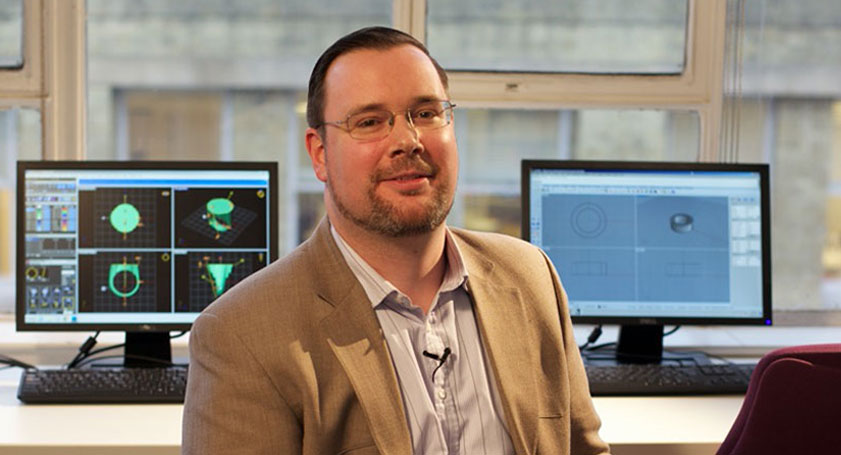
Jack Meyer - Founder CAD Jewellery Skills
What led you to set up CAD Jewellery Skills?
When I started my Hatton Garden-based jewellery manufacturer and training business in 2006, I had been providing a free CAD advisory service to anyone who asked for information. This involved writing a very long message about the differences between various CAD programs. It was not efficient, but it made customers happy, and few people anywhere at the time were willing or able to provide unbiased comparative information on all major jewellery CAD programs. By the time 2010 rolled around, I was receiving enough of the same questions every month it seemed like a smart idea to create a blog to host a frequently asked questions page. That blog was CADJewellerySkills.
I found it also gave me an excuse to play journalist and researcher, looking up what was happening with all the emergent technologies that affect how jewellery is designed, made, and sold.
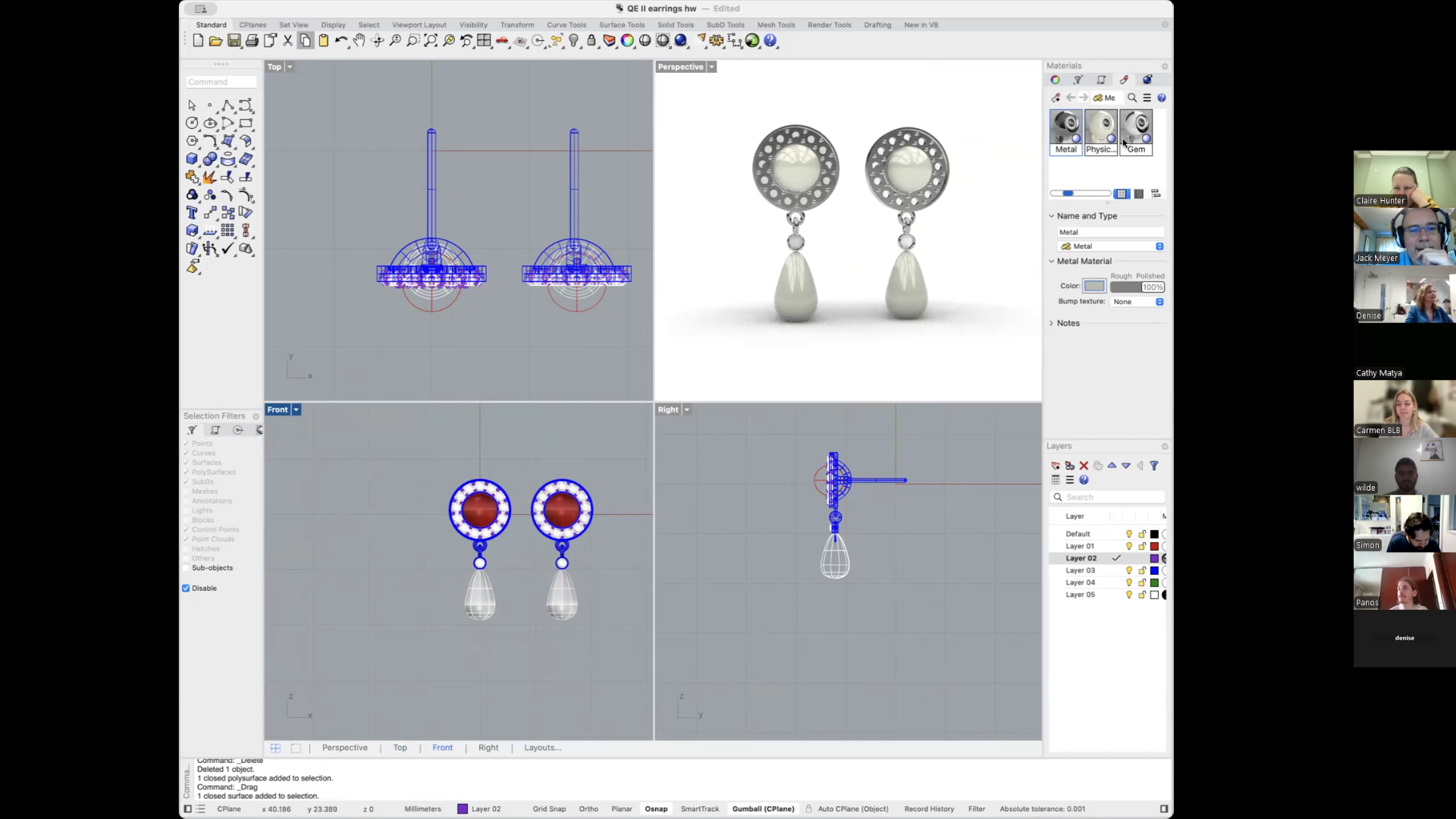
Level 1 Rhino for Jewellery
When did CAD Jewellery Skills start focusing on training?
I’ve always offered training, sometimes on my own as an independent provider, sometimes as part of a larger institution (such as Holts Academy). I pivoted towards full-time teaching in 2012 as the demand on my time from my manufacturing business and training business were both sufficiently intensive that I needed to choose just one as my focus.
While I have been providing short course and bespoke training in person since 2006 and online since 2010, it wasn’t until the lockdown in 2020 that students started taking online training more seriously, and I made my entire course offering entirely digital.
Why did you move all your courses online?
Back in late 2019, I had just finished a Postgrad Certification for Higher Education which I had taken as a distance course. And it got me thinking: there are several different ways people can take training—whether by live tuition, pre-recorded course materials, online, offline. So I started exploring and evaluating the difference advantages of each.
At the end of it all, I found the combination of live training supported by class recordings, course notes, and live after support seemed the best combination of all worlds. It gave the combined advantages of every other method of training with only a few of the downsides. It also meant geography was no longer an issue with students—they could learn from anywhere on Earth.
The courses I provide are the product of nearly two decades of experience in delivering training in these CAD programs to jewellers of all experience levels, allowing for all different levels of confidence in computers, and all different learning styles and types of neurodivergence. With all these layers of support I’ve aimed to make the experience as enjoyable as possible for the students. And judging from the reviews they seem to be happy.
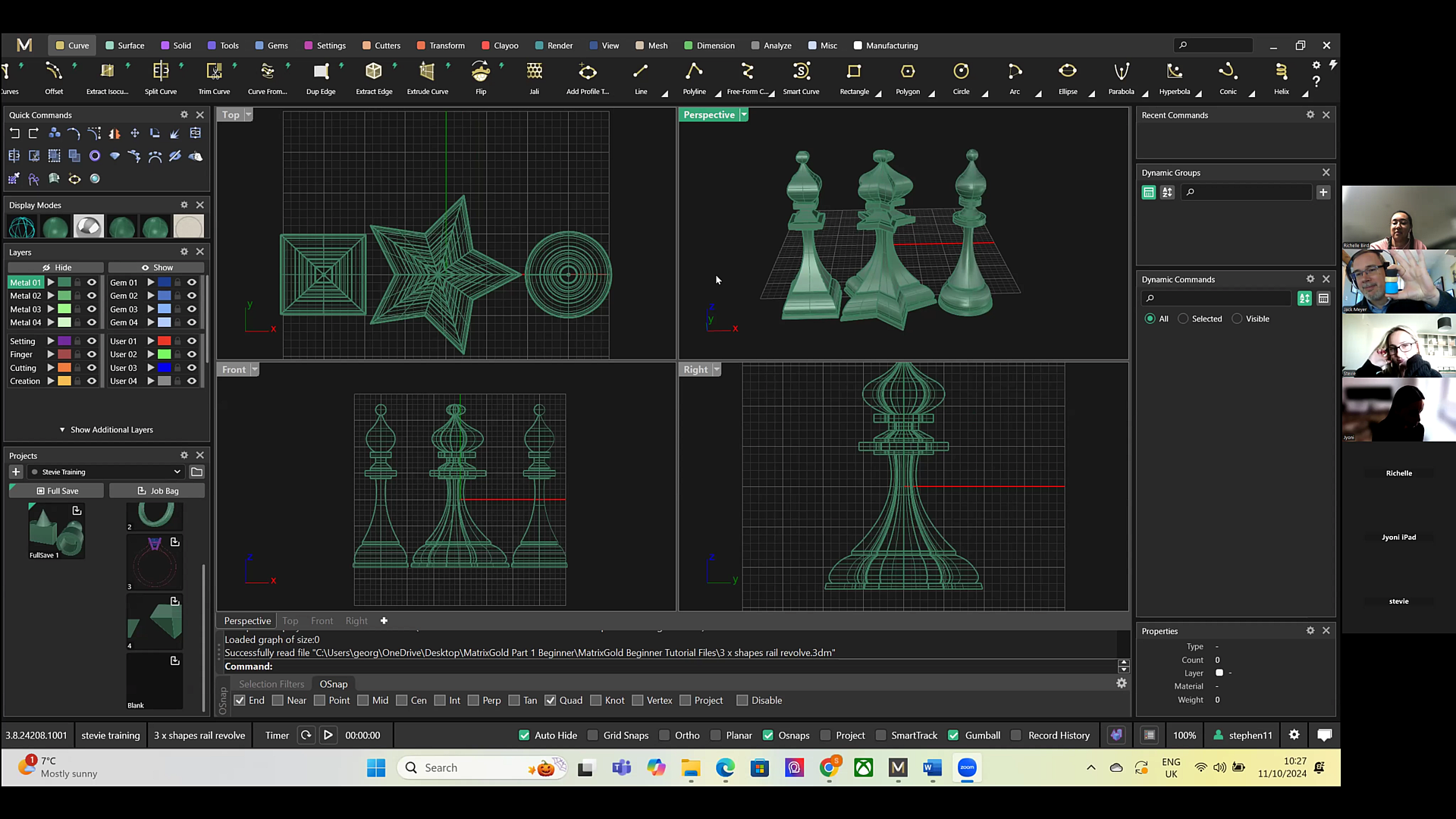
MatrixGold for Beginners
Who are your courses most relevant for right now—are you seeing more interest from industry, enthusiasts, or both?
Primarily people working in or looking to work in industry. All of my courses are focused on teaching people to use these tools and techniques for professional jewellery design and manufacturing. So I don’t just provide recipes for making jewellery in my courses. Rather, I talk about the sizes and tolerances you need to be aware of when making jewellery for 3D printing and casting. And we discuss the tools in each program in terms of a holistic strategy for problem solving. This makes it easier for students to know where to begin with their own work after the course is over.
How has the demand for CAD shifted in recent years, and what’s driving that?
Fewer and fewer people see CAD now as an exciting new thing, or a terrible new threat. That fear of the future has since moved onto other technology like AI. Instead, people see CAD for the benefits it brings in serving as a bridge between designers and manufacturers, letting jewellers carry their designs fairly deep into the manufacturing process, and keep a tighter hold on the quality control of their pieces.
What kind of software do you teach, and how do you approach working with people at different levels?
I’ve made a point of keeping up to date and teaching every major 2D and 3D CAD software commonly used in the UK jewellery industry. Right now that seems to be Adobe Illustrator, 3Design, Carveco, MatrixGold, Rhino3D, and Zbrush (for which I’m currently developing a new course).
I’m even still able to offer courses in programs which have been discontinued, such as ArtCAM Jewelsmith, Matrix, and RhinoGold.
Do you have a student story or project that stands out as a good example of what’s possible with CAD?
Not one in particular, but I do have a lot of stories of crazy projects. Back when I was still running a jewellery manufacturer in Hatton Garden, I was the go-to guy for the weird stuff that other manufacturers in the area didn’t want to touch. I didn’t mind of course—so long as you have the tolerances for making it in whatever material you’re planning on using, we can theoretically make just about anything with CAD and 3D printing.
So I ended up working on commemorative medallions, giant Japanese sandals, titanium high heels, plastic plumbing fixtures, fetish jewellery, eating utensils, anatomically correct animal sculptures, football queen tiaras, tiny toy soldiers, fancy whiskey bottles, steampunk clocks, My Little Pony jewellery, and of course I’ve sculpted Michael Jackson’s face in gold bas relief.
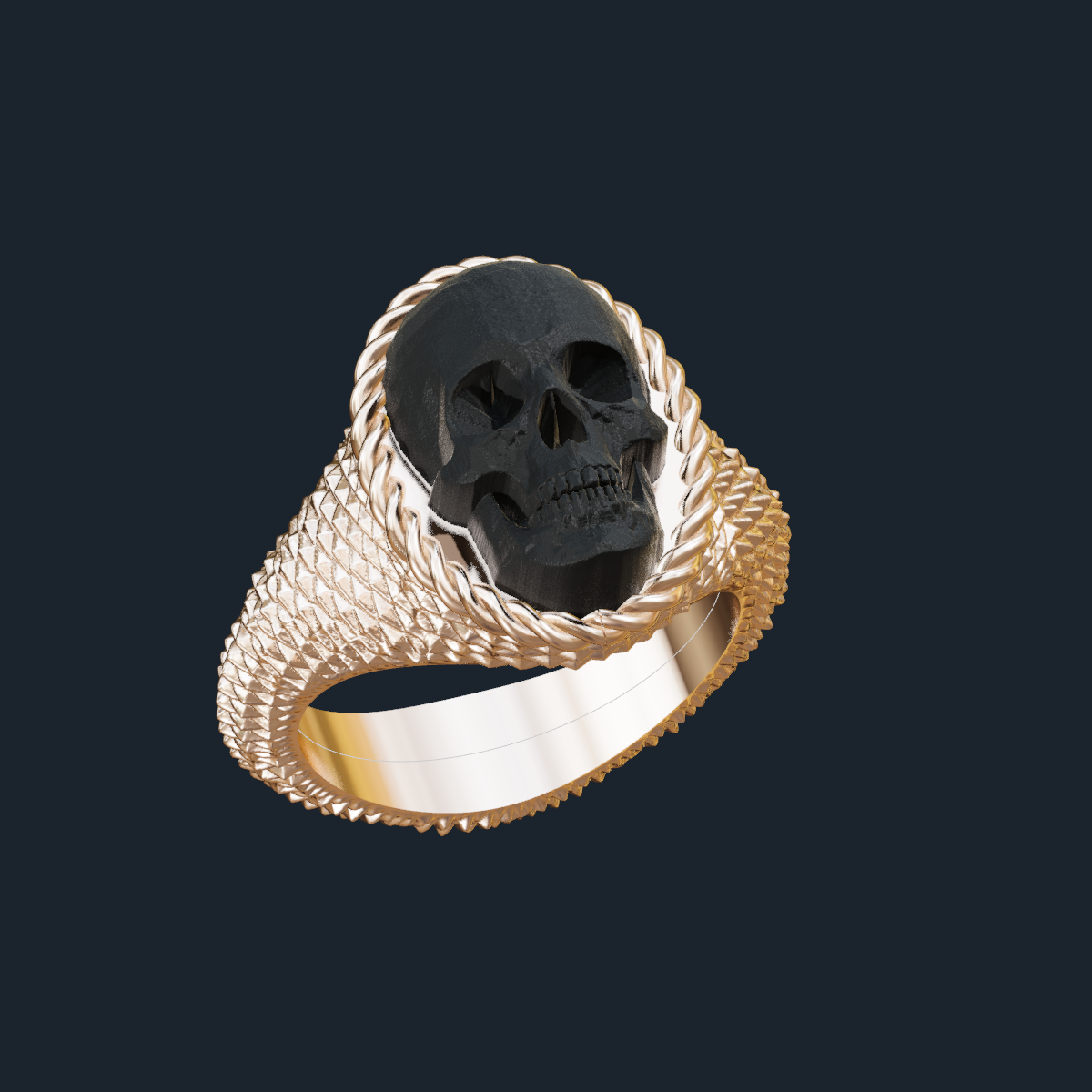
3Design Skull Cameo Ring
What would you say to someone who’s only ever worked by hand but wants to get started digitally?
I’d say two things:
First, make sure you have spent some time learning to draw, and learning to make jewellery by hand. Having some understanding and experience of both of these will make a huge difference in understanding what you’ll be doing in CAD.
Second, I run a regular seminar with the Goldsmiths Centre called “First Steps into CAD” which explains what to expect when getting into CAD as a newcomer, as well as describing in detail the differences between the various CAD programs out there. Come along to that and I’ll answer your questions directly.
Where do you see CAD in jewellery heading next—creatively or commercially
The subject of AI is a volatile one right now—it’s very hard to have a rational discussion with some segments of the creative community on the subject. The companies have done themselves no favours though with irresponsible overselling and overstating of AI’s capabilities, and not sufficiently addressing concerns over intellectual property.
But that doesn’t change the fact these tools are here now and we are stuck with them. So like any other tool and any innovation, we need to learn to manage and regulate it responsibly and not oversell its capabilities. Most people already know about what AI can do with 2D image generation, music, and writing. But not many know there are several companies experimenting now with automation tools which use text prompts to generate sculptural 3D model data, with some success. Again, responsibly handled, they could make for an interesting augmentation for a sculptural CAD designer using a mesh sculpting tool like Zbrush.
I’ve even developed an online short course to teach people how to use Photoshop to rework and post-produce the imagery they create with AI image generators like Midjourney. I invite anyone who is interested to contact me and I’ll give you prices.
For those looking to take their CAD knowledge further, Jack Meyer has distilled nearly two decades of experience into a definitive guide: Advanced Jewellery CAD Modelling in Rhino. Published in partnership with Routledge and available globally, the book is the first of its kind — a specialised, jewellery-focused Rhino training resource aimed at intermediate to advanced users.
Far more than a manual, the book explores both technique and process: how to design for manufacture, manage tolerances, plan for stone-setting, and create complex forms such as pavé settings, hinges, and hollow structures. It’s not just about mastering Rhino as a software — it’s about learning to think like a CAD-based jewellery designer.
Used by independent makers, in-house designers and educational institutions alike, the book reflects Jack’s unique teaching style: clear, technical, and grounded in practical outcomes. Whether you’re self-taught, formally trained, or somewhere in between, it’s a resource that rewards repeat reading — and one that sets a benchmark for professional jewellery CAD instruction.
Learn more or order online:
Advanced Jewellery CAD Modelling in Rhino 3D
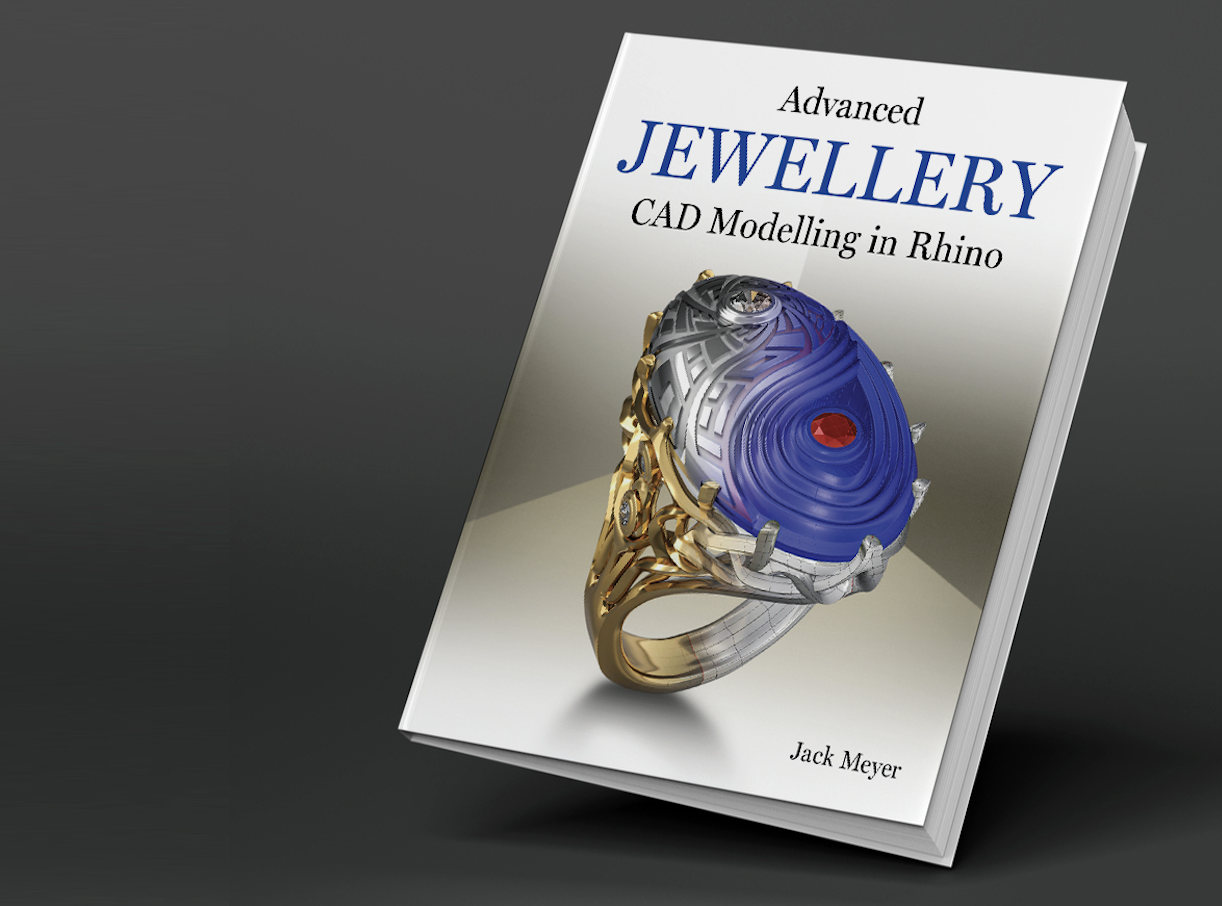
Advanced Jewellery CAD Modelling in Rhino
CAD is no longer a future-facing novelty — it’s the present-day foundation of modern jewellery manufacturing. Over the past two decades, Jack Meyer has become one of the most respected educators in this field, not just in the UK, but globally. He isn’t aligned with a single brand, which makes his teaching both flexible and deeply informed — a rare asset in an industry where software allegiances often narrow the learning experience.
What sets Jack apart is not just his cross-platform expertise, but his active partnerships with key players in the jewellery CAD ecosystem. He works closely with GVUK Design to support MatrixGold training, Sierra Consultancy for 3Design, and SimplyRhino for Rhino-based education. These relationships allow him to stay ahead of software developments while maintaining the independence to guide each student toward the platform best suited to their individual style and workflow.
Andrew and Jack have known each other for years. Their long-standing relationship is rooted in a shared belief that real design confidence comes from understanding your tools — not just using them. For jewellers looking to sharpen their edge, adapt to digital production, or future-proof their skills, Jack remains the trusted name to start with.
Find Out More or Follow Along
To read more about Jack Meyer and his jewellery CAD courses, visit www.cadjewelleryskills.com or follow him on Instagram @cadjewelleryskills.
Watch 3Design, MatrixGold and Adobe Illustrator in action below to see how each software shapes the design process.

Jack Meyer with The Jewels Club Founder Andrew Martyniuk
You must be logged in to comment. Click here to login.

Rethinking the Natural Diamond Industry
As lab-grown disrupts the market and consumer habits shift, it’s time to re-examine how we position natural diamonds—and who we’re really selling to.
READ MORE
0 Comments